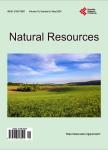Wildlife Population Change in Africa from the Eyes of the Public—The Case of Mara Enoonkishu Conservancy in Southern Kenya
Wildlife Population Change in Africa from the Eyes of the Public—The Case of Mara Enoonkishu Conservancy in Southern Kenya作者机构:University of Kabianga Kericho Kenya Department of Geography & Environmental Studies University of Nairobi Nairobi Kenya
出 版 物:《Natural Resources》 (自然资源(英文))
年 卷 期:2016年第7卷第7期
页 面:434-444页
学科分类:090504[农学-特种经济动物饲养(含:蚕、蜂等)] 0905[农学-畜牧学] 09[农学]
主 题:Wildlife Population Change Animal Counts Public Perception
摘 要:The aims of the study were to: 1) determine the wildlife population trends in the Mara Enoonkishu Conservancy from the eyes and minds of the public, 2) assess the recent trends in wildlife populations based on actual scientific counts, and 3) compare the two patterns and establish whether they are similar or not. The solicitation of public views was based on household surveys using a standard questionnaire which was administered to 115 randomly selected respondents. The dominant wildlife species according to 39% of the respondents was the elephant followed by the zebra with 35%. 40% of the respondents indicated that the rhino population had declined followed by wild dogs (7%) and cheetah (6%). The actual counts showed that the herbivores with increasing populations included the rhino (r2 = 0.9992), impala (r2 = 0.9824), Thomson’s gazelle (r2 = 0.6965), Grant’s gazelle (r2 = 0.7052), elephant (r2 = 0.5798), and topi (r2 = 0.4426) while the increasing predators included the lion (r2 = 1.000), cheetah (r2 = 0.9093) and hyena (r2 = 0.8462). The actual wildlife counts appeared to tally with the public views only for the elephant and zebra. The actual counts contradicted the public views in terms of the rhino, lion and gazelles whose numbers were on the increase but the people did not appear to notice. Based on this, it was concluded that the public view on the wildlife population trend was not similar to the actual wildlife population status on the ground based on scientific monitoring.



